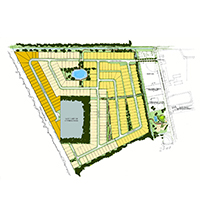The U.S. housing market received a rare piece of encouraging news recently as mortgage rates dipped to a multiweek low, prompting a surge in homebuyer activity that reached a multimonth high. While these developments offer a glimmer of hope in an otherwise tight and challenging market, activity remains far below the levels seen during the recent housing boom.
Lower Rates Spark Increased Buyer Activity
According to Joel Kan, vice president and deputy chief economist at the Mortgage Bankers Association (MBA), the recent uptick in buyer interest reflects the combined effect of slightly lower mortgage rates and increased inventory. “The recent strength in purchase activity continues,” Kan noted, adding that “lower rates and higher inventory levels” are giving prospective buyers more choices compared to earlier in the year.
Despite the positive momentum, the backdrop remains far from ideal. The current 6.69% mortgage rate, though lower than in recent weeks, remains more than 0.5 percentage points higher than it was after the Federal Reserve’s first rate cut in 4.5 years. Meanwhile, the MBA’s purchase index — a measure of mortgage loan application activity — is less than half of its January 2022 level, before the Fed began its aggressive rate hikes.
A Market Adjusting to Post-Pandemic Realities
The housing market’s current slowdown stands in stark contrast to the record-low mortgage rates that fueled a buying frenzy in the early stages of the COVID-19 pandemic. Sub-3% mortgage rates have vanished, replaced by significantly higher borrowing costs that reflect broader economic adjustments.
While mortgage rates are influenced by the Federal Reserve’s benchmark interest rates, they are more directly tied to yields on 10-year Treasury notes — long-term U.S. government bonds. These yields are often viewed as a barometer for the market’s expectations of the Fed’s long-term monetary policy.
The 10-year Treasury yield has climbed more than 0.5 percentage points since September, reflecting investor caution about slower rate cuts and lingering inflation concerns. This has kept mortgage rates elevated, compounding the challenges faced by buyers.
Higher Costs, Higher Payments
For prospective homebuyers, the combination of higher mortgage rates and still-high home prices has created a tough financial landscape. While home prices have not experienced the sharp declines some anticipated, the rise in borrowing costs has significantly increased the monthly payments for buyers compared to those who secured ultra-low rates earlier in the decade.
The result is a double-edged sword: buyers must contend with higher interest payments while also grappling with a high principal, further straining affordability.
What’s Next for the Housing Market?
The dip in mortgage rates and rise in buyer activity suggest the market may be finding some stability after a prolonged slowdown. However, with rates still well above their pandemic-era lows and home prices hovering near record highs, the road to recovery remains uncertain.
For now, prospective buyers and sellers alike are navigating a delicate balance. Lower rates and slightly higher inventory levels have provided some relief, but the broader housing market remains in a period of adjustment, influenced by shifting economic conditions and cautious optimism about what lies ahead.

